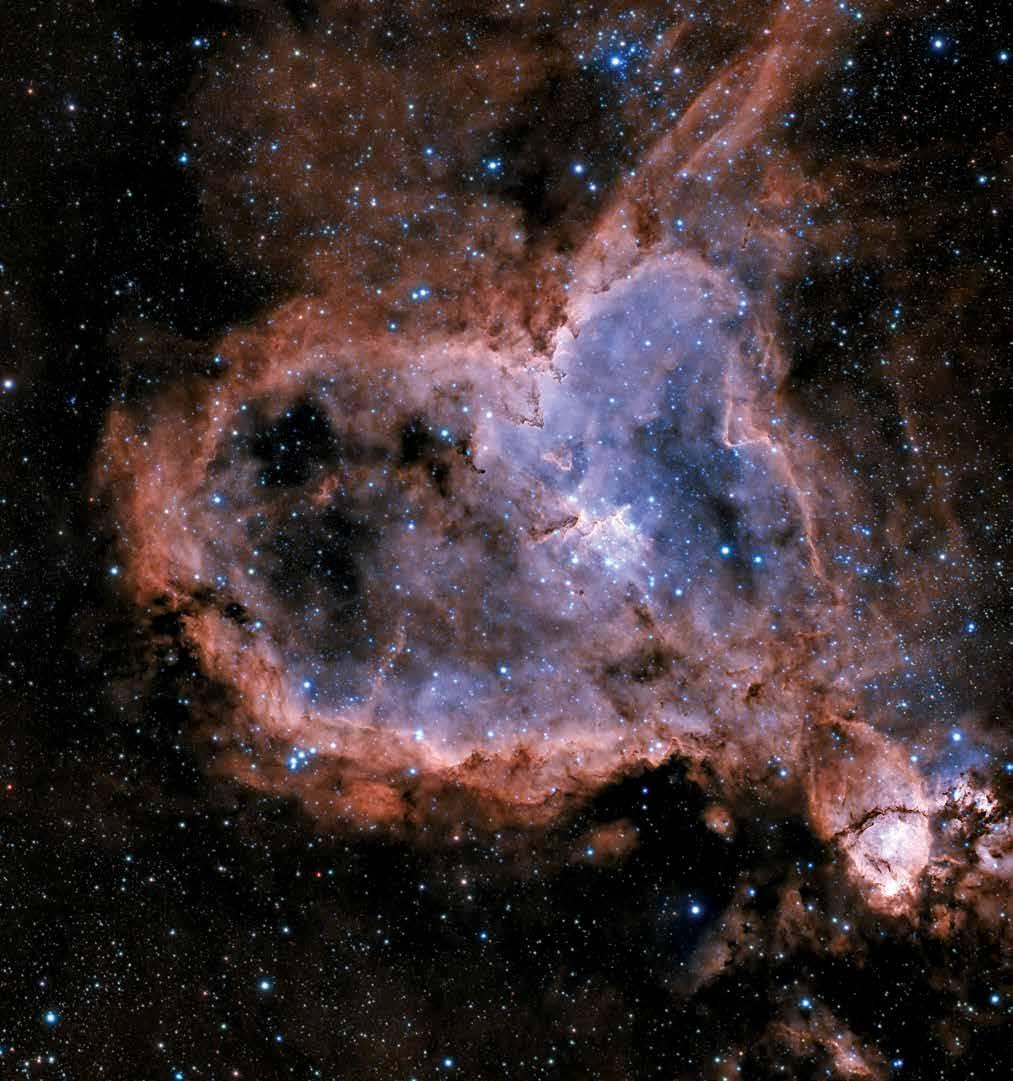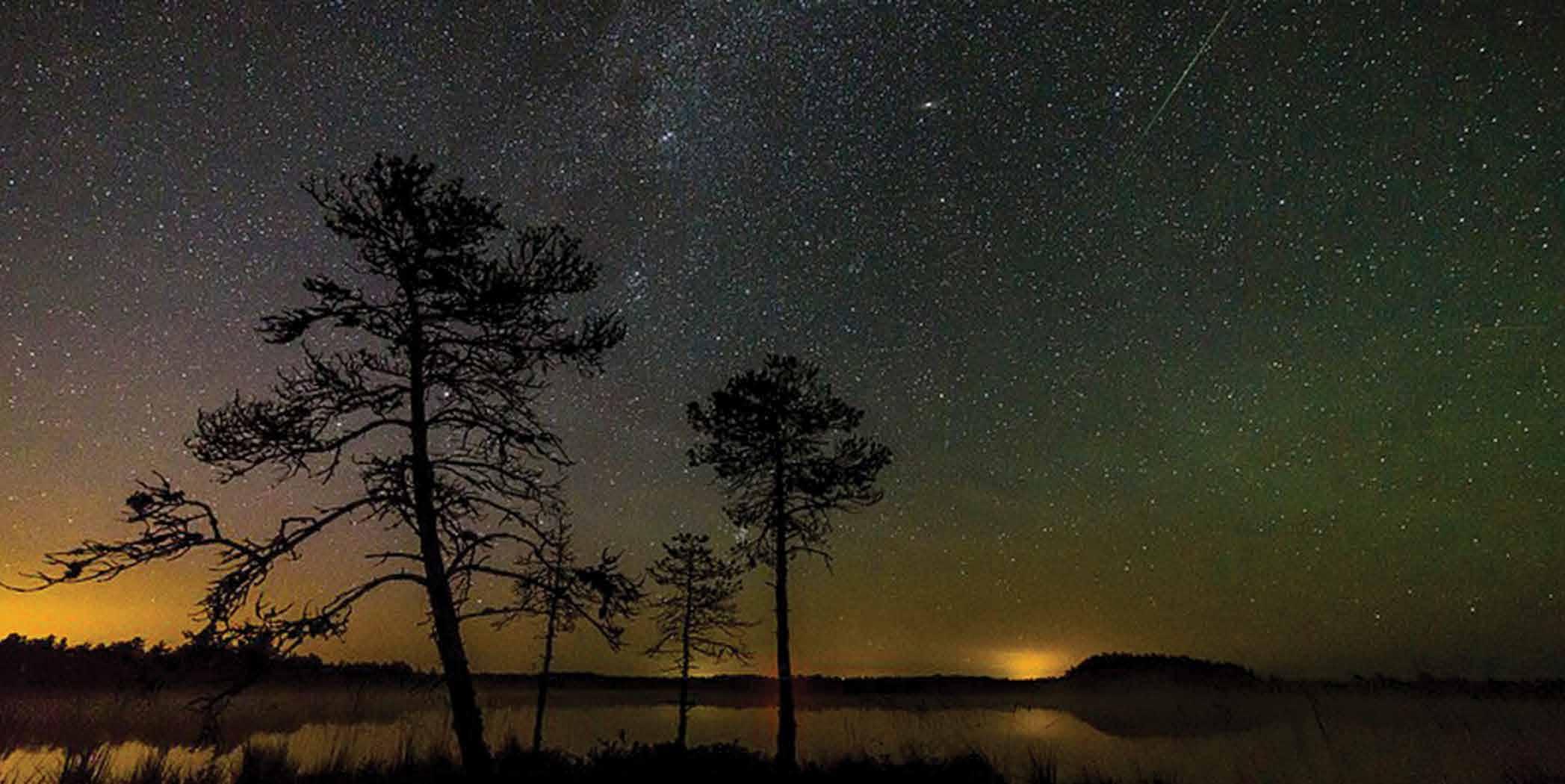
3 minute read
Perseids: Science and Culture
by Casey Pitts
Have you ever seen a shooting star? Bright streaks of light, flying through the sky so fast that if you blink, you could miss them? Contrary to their namesake, these “shooting stars” are not stars at all! They are meteors, disintegrating in Earth’s atmosphere so rapidly that they leave behind trails of bright light. Throughout the production of Not Quite Almost, you will find that the characters frequently see, and miss, shooting stars from the Perseid (pronounced per-see-id) meteor shower.
You may have heard meteors referred to by various different names, such as “meteoroid” and “meteorite,” but these words just tell you where the object exists. When a small rock or piece of debris, typically ranging from the size of a dust grain to a small asteroid, is floating in space, we refer to it as a meteoroid. As a meteoroid enters Earth’s atmosphere at rapid speeds, it begins to disintegrate, leaving behind a trail of bright light. This is a meteor, or what we more affectionately call a “shooting star.” In the case that a meteor is lucky enough to survive its descent to Earth, the object we may find on the ground is called a meteorite.
Meteors can be seen at any time throughout the year, given that the night is clear enough. There are periods of time, though, where you might observe a far larger sum of meteors throughout the night. These are called meteor showers. Meteor showers occur when Earth’s orbit intersects with debris left behind by comets that have previously passed through the inner solar system. As Earth passes through these large concentrations of space debris, our gravitational field pulls in more meteors, causing them to streak through the sky at a higher frequency.
Arguably the most famous meteor shower, the Perseids, occurs annually from mid-July to late-August, with a peak centering around August 12. During the shower, these meteors can be seen at a rate of up to 100 meteors per hour! Perseids are particularly notable for their fireballs, a phenomenon in which larger particles of material create larger explosions of color and light that often last longer than the average meteor streak. Considering this, it is no surprise that the Perseid meteor shower has become one of the most popular showers for viewing. But where does the Perseid meteor shower come from?
The concentration of debris that causes meteor showers is left behind by comets that orbit the sun. In the case of the Perseid meteor shower, the comet of origin is Comet Swift–Tuttle. Swift–Tuttle was discovered by and named for American astronomers Lewis Swift and Horace Tuttle in 1862. Though the comet bears both of their names, these two were not partners, and instead discovered the comet independently three days apart. Years after Comet Swift–Tuttle’s discovery, in 1865, Giovanni Schiaparelli observed the connection between comet Swift–Tuttle and the Perseids, discovering that the comet left behind the debris we see as the Perseids. Swift–Tuttle orbits the sun once every 133 years, and was last found in the inner solar system in 1992, meaning it will not enter again until 2125.

It may seem unbelievable that the Perseid meteor shower can occur at the same time every year, but the orbital path of Earth and comet Swift–Tuttle guarantee it. As Swift–Tuttle completes its 133-year orbit around the sun, it leaves behind a trail of debris that travels along the same orbit at a much slower pace. As Earth continues its 365-day orbit around the sun, it intersects with the orbit of Swift–Tuttle. The trail of abandoned debris then becomes the Perseids. Since the orbits of Earth and Swift–Tuttle are a predetermined path, Earth intersects with the debris of the comet at the same time each year.
You might be wondering why this meteor shower is called the Perseids. Meteor showers are named for the constellation in which their radiant, or apparent origin point, is located. Scientists find this spot by tracing the streaks of the meteors to find the point where the streaks appear to meet. The Perseids' radiant point lies within the Perseus constellation, giving them their namesake. The word “Perseid” comes from the Greek word “Perseides,” meaning “descendents of Perseus.”

Throughout time, there have been many different cultural, religious, and spiritual explanations for meteor showers. The Perseids, in particular, were known to early European Christians before their scientific discovery in 1865. In 258 CE, Roman Catholic deacon Lawrence refused to turn over the church’s money to Roman emperor Valerian, distributing it instead to those who were struggling in his community. For this, Valerian sentenced Lawrence to death, burning him over hot coals. It is believed that during his death, Lawrence told his executioners to “turn him over,” claiming that he was done on one side. Lawrence’s death designated him as a martyr and earned him sainthood shortly after his execution. When those followers of Saint Lawrence later made the connection that the then-unnamed Perseid meteor shower occurred annually around the time of Saint Lawrence’s death, they came to believe that the meteors were his burning tears. Thus, the Perseid meteor shower is known to some as “the Tears of Saint Lawrence.”
Before humans discovered the science around meteor showers and other astronomical events, we found other explanations for what they meant. Whether it be that the heavens were opening up to Earth, the spirits of our loved ones were passing by, or a wish could be granted, people have always found a meaning for shooting stars. Throughout Not Quite Almost, we are reminded of what that meaning is for different people.










